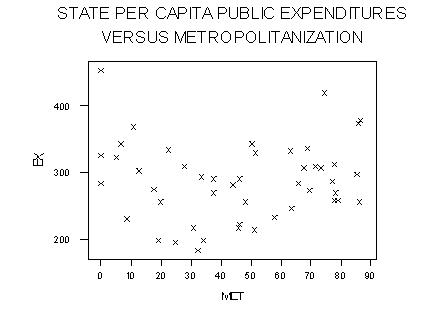Story Name: State Public Expenditures
Datafile Name: State Public Expenditures
Abstract: In extending the regression of state and local per capita public expenditures to factors in addition to economic ability (see State Spending and Ability to Pay), metropolitanization is a relevant factor. A linear regression with the percent of population in metropolitan areas (MET) would be insignificant. Actually, the relation is U-shaped (see Image). A second order (MET-squared) term is needed to capture this element. In doing so it is best to re-express MET as deviations from the mean MET and to square the deviations to form MET-squared, or MET2. The linear coefficient of MET will then represent the slope of expenditures at mean MET rather than at zero percent metropolitanization. An influential observation (Nevada) is still present as is the differential for Western states (see State Spending and Ability to Pay). Various stepwise and best subset regressions will then produce sets of significant predictor variables accounting for around 70 percent of total variation in state per capita expenditures.
Image:


